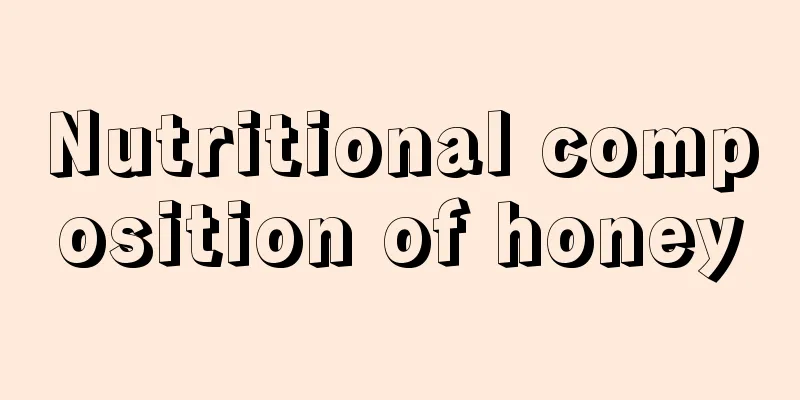Nutritional composition of honey

|
Honey is a common thing in daily life. It is also very effective for people's physical health and nutritional supplements. It is usually consumed as a health product, mainly because honey itself is rich in nutrients and is loved by many people. Many people know that different things on the market have certain nutritional composition tables to reflect their nutritional status. So what should the nutritional composition of honey look like? 1. Water content: Generally, the water content of honey is 15%-25%, and the water content of mature honey is below 18%. The less water content, the higher the grade of the honey. 2. Carbohydrates: Carbohydrates in honey account for 70% to 80% of the total composition, of which fructose and glucose are the main components, accounting for 80% to 90% of the total sugar content. In addition, it also contains disaccharides and polysaccharides, such as sucrose, maltose, raffinose, dextrin, melezitose, etc. Since honey is a high-concentration sugar solution, it produces a lot of calories like sucrose. 1 kilogram of honey can produce 3280 calories, making it an excellent food for strengthening the body and health. 3. Minerals: The mineral content in honey is generally 0.04%-0.06%, including iron, copper, potassium, sodium, tungsten, zinc, manganese, magnesium, phosphorus, calcium, etc. 4. Vitamins: Due to the different varieties of honey, the vitamin content is also different. 5. Protein and amino acid: The crude protein content in honey is 0.20%-0.26%, the crude protein content in asparagus is 0.2%, the crude protein content in cotton is 0.4%, and the crude protein content in buckwheat is 1.26%. There are about 16 kinds of amino acids in honey, including lysine, arginine, threonine, methionine and amino acid. 6. Enzymes: Honey is rich in enzymes, which is incomparable to other foods. The enzyme in honey is invertase, which converts sucrose into glucose and fructose. In addition, honey also contains a large amount of amylase, catalytic enzyme, phosphatase, and glucose oxidase. 7. Dextrin and colloid: The dextrin in honey is different in different types of honey. The dextrin content in rapeseed honey is 0.37%, in purple honey it is 0.75%, in clover honey it is 3.41%, and in honeydew honey it is over 100%. Colloid is also a component of honey. Generally, the colloid content of light-colored honey is about 0.2%, while that of dark honey is about 1%. 8. Other substances: Honey also contains inositol, pigments, biologically active substances, acetyl bile, etc. |
>>: What to do if there is a big gap between the front teeth
Recommend
Why does it get more itchy the more I scratch?
Many friends find that their bodies are itchy, an...
What is neurofibromatosis? How is neurofibromatosis treated?
What is neurofibromatosis? Neurofibromatosis is a...
What are the basic hair care needs?
Women all want to have beautiful hair, but it is ...
How to treat closed comedones
Many girls have closed comedones on their faces. ...
Is it good to use laser to remove black spots on the face?
The black spots on the face are generally freckle...
Pain in the roof of my mouth
Everyone's diet has gradually become very goo...
What methods can be used to treat heel pain?
In daily life, many people often feel itchy heels...
Where is the best place to grow a mole on the body
Moles are relatively common in people's bodie...
This part of the body turns blue easily leading to paralysis
We often see bruises on the body, a blue area wit...
My temple is throbbing violently
The temple is a very important part, but people m...
Wrist pain and finger numbness
Fingers can be said to be the extremities of our ...
What are the symptoms of people with low self-esteem
Inferiority complex is a relatively common psycho...
What causes dry mouth and sore throat? What to do?
In the summer, everyone sweats frequently, which ...
What are the dangers of melanoma
In daily life, many people don't know much ab...
Several effective methods for early treatment of colon cancer
There are two main methods of early treatment of ...









